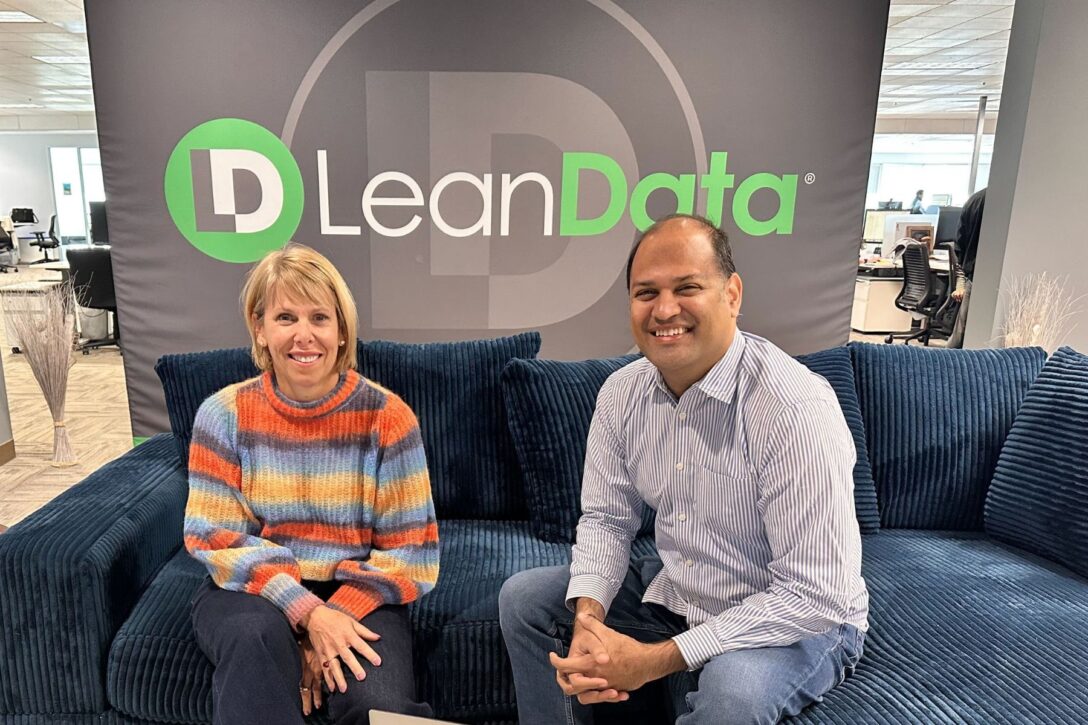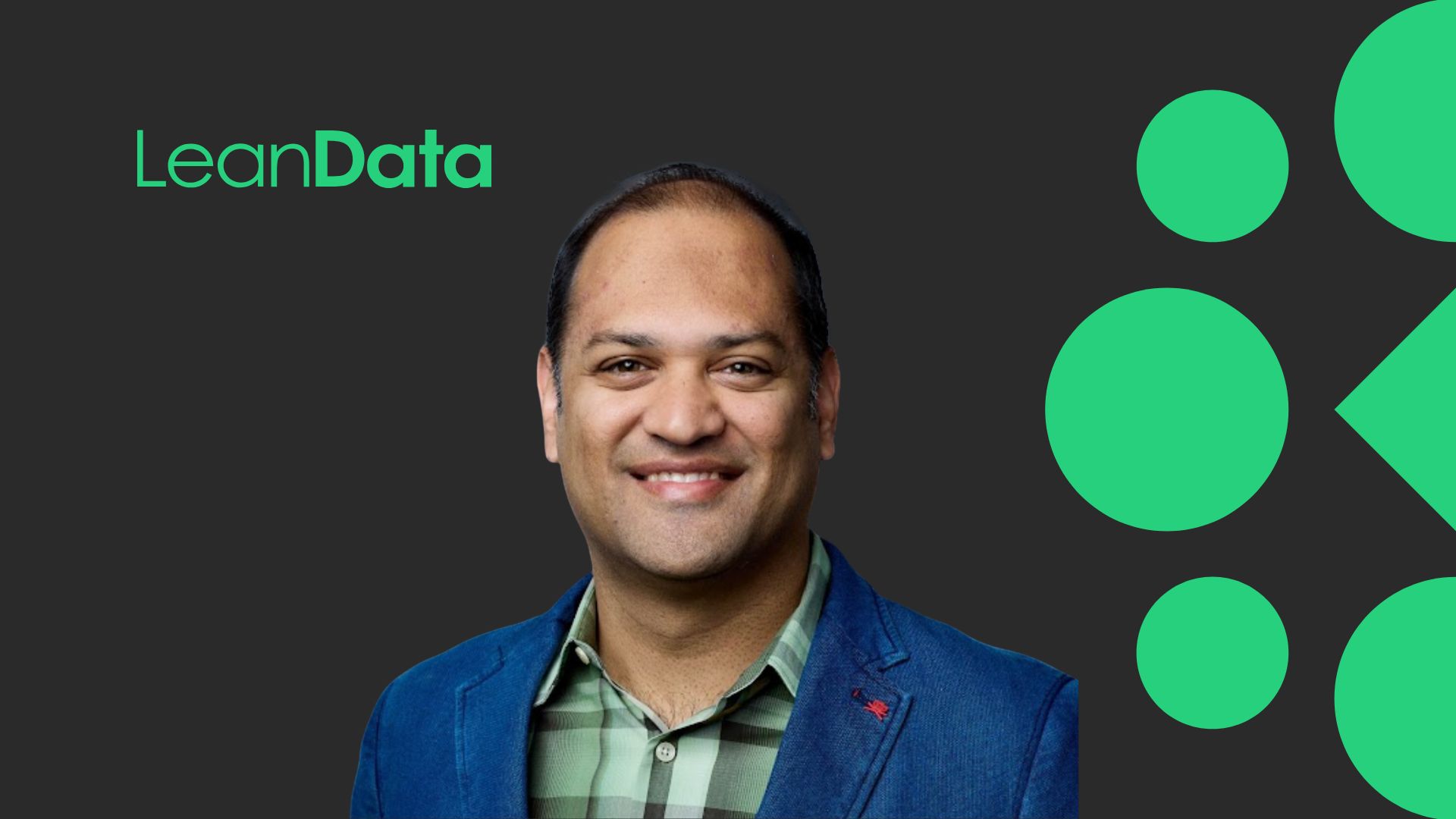We’re excited to welcome Amar Doshi, LeanData’s new Chief Product Officer.
Amar brings more than a decade of experience building category-defining B2B platforms and a passion for applying AI to solve real customer problems.
In this Q&A, Amar shares what drew him to LeanData, his vision for product innovation, and how he plans to build the future of go-to-market orchestration together with our customers.

1. What drew you to LeanData and this opportunity at this point in your career?
After a decade building 6sense, this was actually an easy decision for me. I’d worked with Evan and the LeanData team as a product partner for years, and saw firsthand the company’s deep customer centricity, and the loyal, even raving, fans that culture has created. That’s a powerful foundation to build upon.
I was also deeply impressed by Katy’s leadership and her reflective, thoughtful style. It showcased her authenticity and focus on building a championship culture.
The incredible team she’s assembled also spoke volumes about her approach. During our conversations, it just felt like a natural fit — a sense that together we could achieve something amazing.
Finally, I wanted my next chapter to stay true to what drives me: solving real problems using data and AI to deliver meaningful B2B impact.
LeanData has the right ingredients: a strong product, passionate customers, and exceptional people to make that happen. So, here we go!
2. You’ve helped scale one of the most successful GTM platforms in the market. How will that experience shape your approach to leading product innovation at LeanData?
LeanData already has an impressive culture of experimentation and smart product decisions. This is a great foundation to build on.
My focus here will be on applied AI, using it to deliver the greatest impact for customers in how they configure, use, and take action through our product.In parallel, I want us to move with speed, front-load our research, and make bold, meaningful bets on the roadmap, ones that truly pay off for customers. And as we chart that path, I’m eager to hear ideas directly from our users and customers.
Innovation is always stronger when it’s built together.
3. How do you think about balancing innovation in AI with operational reliability, the “trust and governance” layer RevOps depends on?
One of the major reasons customers buy and trust LeanData is for its operational reliability, governance, and performance.
LeanData has earned that reputation over the years, and it’s especially critical given the role we play in the GTM fabric, where RevOps teams depend on deterministic, dependable workflows.
That said, there’s also tremendous opportunity to apply AI in areas where probabilistic intelligence adds value, simplifying lifecycle management, improving usability, and making complex data relationships more intuitive.
A great example is our recent AI Graph Summary and AI Graph Deltas features. They may seem simple, but they’re incredibly powerful, helping users instantly understand complex structures that would otherwise take hours to learn and understand. That’s real, applied innovation that saves time, effort, and frustration.
As we plan our roadmap, customers can expect us to take a balanced approach, continuously strengthening the core systems they trust, while thoughtfully integrating AI where it delivers meaningful impact. The goal is to help our customers stay competitive by innovating on their behalf, not at their expense.
4. What opportunities do you see for AI to meaningfully impact revenue operations in the next few years?
I see a future where AI fundamentally reshapes how revenue operations work, not replacing people, but rather connecting data, insights, and actions for go-to-market execution in ways that were never possible before.
AI can help stitch valuable data together more efficiently, uncovering nuances hidden in unstructured information, and turning those into tactical insights that drive both digital and human GTM actions.
Imagine a system that not only automates a task, but also orchestrates the right team members, across the right channels, to engage the right buying groups at the right time.
LeanData already provides the core orchestration layer for these critical workflows, the “connective tissue,” if you will.
As AI continues to advance, I believe RevOps will push us to evolve that layer into something even more powerful: a universal bus or enterprise nervous system that connects AI insights and AI actions across every part of the go-to-market ecosystem.
5. LeanData often talks about connecting data, people, and systems across the buyer journey. How do you see that vision expanding as GTM teams face more complexity?
LeanData’s role will only become more critical as go-to-market complexity continues to rise. Customers need a trusted orchestration layer within their tech stacks, one that brings order, standardization, and clarity to increasingly complex business logic.
As buying groups grow larger, tech stacks become more fragmented, and coordination between humans and AI agents intensifies, LeanData’s mission expands.
We will continue to connect to more data stores, extract deeper insights, govern and operationalize business logic, and orchestrate automated or semi-automated actions across systems, all while maintaining transparency and observability.
Our vision is to remain that steady and trusted partner RevOps teams can rely on, continuously expanding the platform’s value to help customers navigate complexity with confidence.
6. What’s one principle that guides your product leadership style?
We’ve talked a lot about innovation above, so it’s worth highlighting a principle that I believe in and use to guide product teams, and we’ll be working to incorporate within LeanData. It comes directly from one of our core product principles:
“We iterate relentlessly, but responsibly. We believe in shipping Minimum Lovable Products (MLP) in every iteration and no launch is final. We pay close attention to post-launch success after every release. We test, learn, and improve continuously through iteration. Humility and curiosity fuel progress while perfectionism delays value, so we believe in iterative product motions.”
This principle is especially important in B2B product development, where customers depend on reliability along with the ability to move quickly. Shipping iteratively doesn’t mean compromising quality, it means being intentional about learning and value creation. Version 1 may not have every bell and whistle, but it should always deliver something customers love and find meaningful from day one.
7. Finally, what can customers and partners expect from LeanData in the coming year, and how can they be part of shaping what’s next?
You’ll notice thoughtful refinements in how we release products, communicate updates, and deliver value each quarter.
We’re doubling down on customer-driven innovation across our core focus areas: AI, Buying Groups, and BookIt, with meaningful improvements planned throughout the year.
We deeply value your feedback and ideas. Customers can share input directly with our product team via their Customer Success Manager.
If you hear from one of our product managers, designers, or even from me directly, please say “yes” to that conversation. Your insights help us make smarter decisions, prioritize what matters most, and design products that truly serve you.
This next phase is about co-creation, working side by side with customers to build what’s next.
8. When you’re not thinking about product strategy, what’s your favorite way to unwind?
Music is essential to my mental well-being and creativity. Whether I’m listening or making my own, it helps me unwind and reset. It’s my way of stepping back, recharging, and reconnecting with that creative energy that ultimately fuels my work, too.
9. You’ve spent your career in the B2B tech space, what’s the most non-B2B thing about you?
I’ve written and recorded a few songs over the years, and I’ve loved the performing arts, like dance and theater, since I was a kid. It’s a completely different world from B2B roadmaps and metrics, but it helps me think emotionally and creatively. That side of me actually strengthens how I connect with customers, teammates, and the stories we tell through our products.











